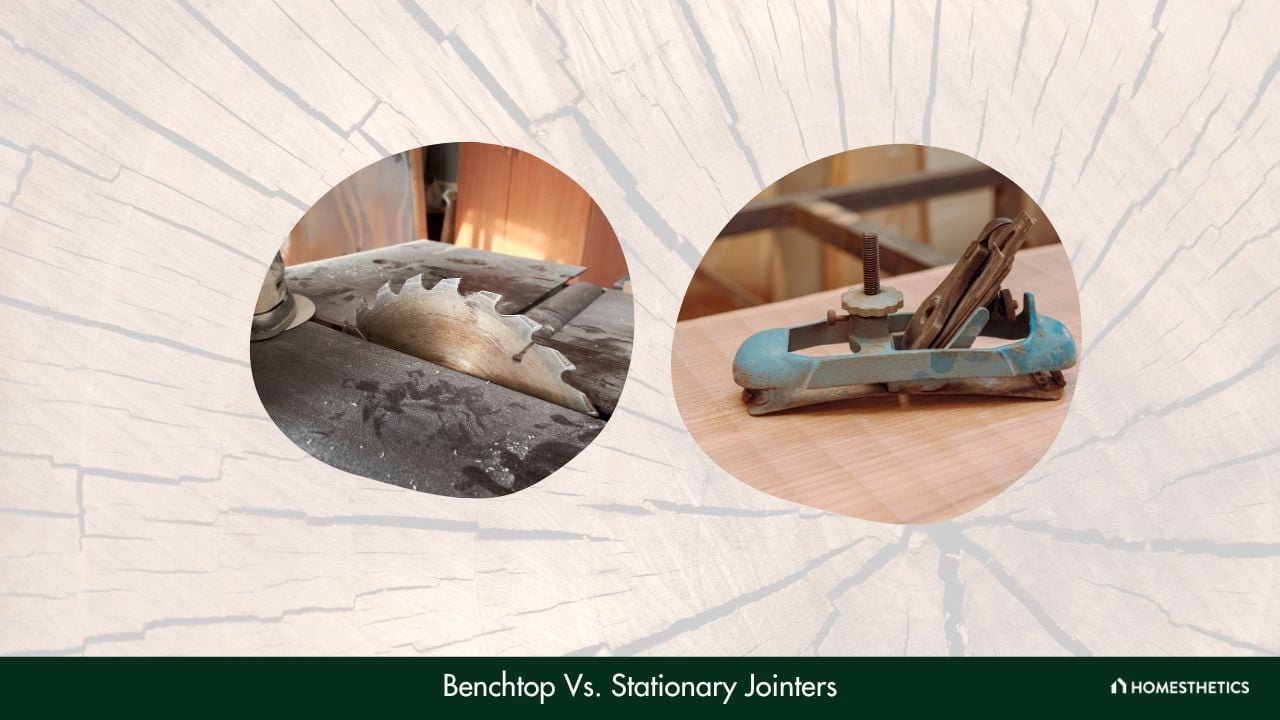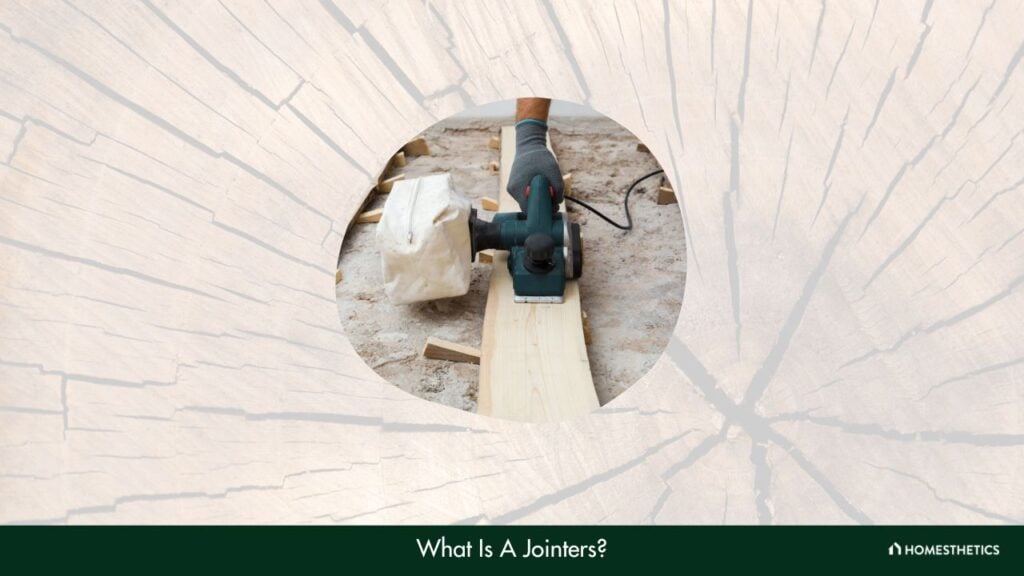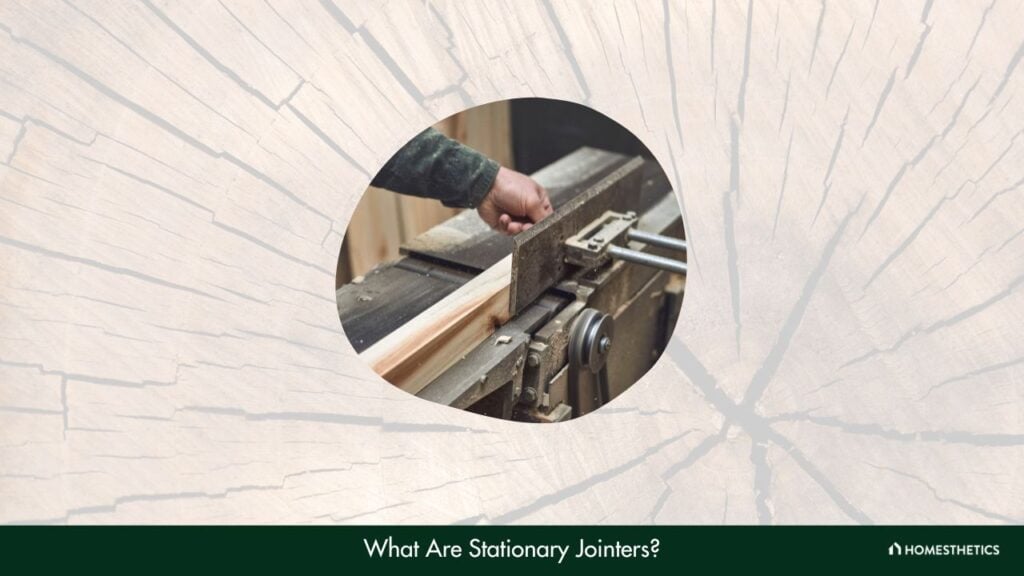A benchtop jointer has a compact design and is more convenient to use for beginners and DIYers. On the other hand, a stationary jointer has a large size and is more powerful, which makes it better suited for professional woodworkers.

One of the signature tools of a woodworker is a jointer. If you have done some DIY woodwork, you’d know how useful this tool is.
This handy piece of equipment is used for making the surface of wooden birds flat and smooth so that they can be joined together. On that note, there are two types of jointer used by woodworkers today, which are benchtop and stationary jointers.
So, if you are relatively new to woodworking and would like to know the differences between them, then dive right in!

Before proceeding further, let’s briefly discuss what a jointer actually is. As I have mentioned before, it is a tool that is used to smoothen the outer surface of the wood so that it can be joined to other wooden surfaces.
A typical wood jointer consists of different components, such as the in-feed and out-feed tables (which are together known as the bed), the cutting head, and the fence. The lumber piece is placed on the in-feed table, where it is held in place firmly by the fence.
Then it is pushed through the blade, which shaves off a layer of wood from the surface. The finished piece of lumber that comes out on the out-feed table contains a smooth surface without any warps or irregularities.
A wood jointer is different from a planer, even though the latter is available in benchtop and stationary models and can be used for shaping uneven wood surfaces. The cutting blade of a planer is located on top of the wood, while the jointer blade is located underneath. Thus, the jointer is better at shaping wood for tight, seamless joints, whereas the planer only smoothens the wood surface.
What are benchtop jointers?

Now that you have a basic idea of a jointer let’s talk about what a bench-top jointer is, along with its advantages and disadvantages. To put it simply, a bench-top model is a small-sized jointer that is used for shaping and flattening wooden surfaces for joining.
It follows the same working principle as a typical jointer, which I have discussed in the previous section. However, it is a compact power tool that you can use for woodworking.
With that in mind, here are some of the advantages and disadvantages of benchtop machines.
A. Benchtop jointer advantages
1. Portability
Thanks to its smaller size, a benchtop jointer is a highly portable woodworking option. It has a compact form that is lightweight, which means that it can be carried easily by one person. So, if you like to move around a lot, you will find a benchtop jointer to be quite beneficial.
2. Space-saving design
Since a benchtop jointer has a smaller size, it means you can use it to save space in your home. This can be especially useful if you live in a small apartment or have minimal storage space in your garage or basement.
3. Convenience
Using a benchtop jointer is pretty easy, which can be attributed to its lighter weight and smaller size. You can set benchtop jointers up in a short time and without any hassles, and it is fairly easy to clean and maintain, too.
4. Affordability
Another significant advantage of using a benchtop jointer is its price. You can purchase a benchtop model at a comparatively lower cost than other types of woodworking tools. As such, they can be a great investment for beginners or DIY woodworkers.
B. Benchtop jointer disadvantages
1. Low capacity
Because of the small size of a benchtop jointer, the bed size is extremely limited. You can use this machine only for small pieces of wood. This can pose a significant disadvantage for large-scale woodworking projects, where you need to shape and smoothen large lumber pieces.
2. Low power
Limited power is another major disadvantage of using a benchtop jointer. This machine is mostly used for small-scale projects, which means that it has not been designed to handle heavier workloads. So, if you have a large lumber piece that needs to be shaped, you will find this machine to be grossly inefficient.
3. Less stable
Based on my first-hand experience, I can say for a fact that benchtop jointers have very poor stability. This is due to the fact that such a jointer is not firmly attached to the ground. Therefore, it is more prone to wobbling or moving around when in use.
What are stationary jointers?

As the name suggests, a stationary jointer is a tool that is fixed to the ground. It is considerably larger and can handle larger loads. Because of these reasons, it is otherwise known as a floor-standing jointer or cabinet jointer.
In that context, the advantages and disadvantages of these jointers have been described below.
A. Stationary jointer advantages
1. Higher capacity
A floor-standing model has a longer bed length, which means that it is capable of handling large pieces of lumber. What’s more, you can use it to shape a high volume of wood in a short time.
2. Greater power
Compared to a typical bench-standing model, a cabinet jointer has greater power. This means that you can use it for shaping rough lumber, hardwood, or big furniture pieces with greater effectiveness and accuracy.
3. Better stability
Since a Stationary jointer is fixed to the floor, it has no chance of moving around or wobbling while in use. This makes the floor model a lot more stable than the bench-top model.
B. Stationary jointer disadvantages
1. Expensive
It will cost you a lot of money to buy a stationary jointer. So, if you are a DIYer or a small woodworker, you might not find it feasible enough to purchase.
2. Inconvenient
Stationary models have a large footprint, which means that they are not very suitable for small spaces. The higher weight and the stationary nature means that you won’t be able to carry them around as easily as benchtop models.
Besides, it will take you a lot of time to assemble the components of a cabinet joiner. Apart from that, cleaning this machine can be a fairly complicated task as well. All of these aspects make it highly inconvenient to use, especially for beginners.
3. Loud and messy
Since a stationary jointer has a more powerful motor than a benchtop model, it will generate a lot of noise and dust. Yeah, I admit that benchtop models generate noise and dust too, but after trying it in various situations, I can say that it is not as great as floor-standing models. This can make it a challenge to use within a household setting.
Benchtop jointer vs stationary jointer - Which option should you choose?
Now that you know about both these types of jointers, it is time to address the most important question - which jointer should you pick? Well, the answer to this question depends on a range of factors.
The most important factor to consider is the budget. If you are a beginner or an occasional DIYer, you will naturally have a smaller budget. In that case, it is more feasible to buy a benchtop jointer. Conversely, if you are a professional woodworker with a higher budget, then you should go with a stationary model.
Tip
You should always try to stay within your budget while buying a jointer, which means that you should refrain from purchasing extremely pricey options. That said, you should not settle for an unbelievably cheap option either since such low prices often indicate the presence of quality issues.
Another factor to consider is the scale of your woodworking projects. Benchtop jointers are a better option to consider in the case of small-scale woodworking processes. But if you usually undertake bigger projects, then it would be better to get a cabinet-style jointer.
There are some other factors to consider as well, such as the available space and ease of use, to name a few. If you have a small apartment or if you want a convenient usage experience, then it is better to get a benchtop model. However, if you have ample space, and prioritize accuracy and effectiveness over convenience, then a stationary model will be a better choice.
How to maintain a wood jointer?
Maintaining your wood jointer is important so that you can improve its efficiency and lifespan. In order to do that, you will need to clean it periodically. Make sure to clear out the dust collector and clean the countertop or bed. If the blades have become dull or damaged, you’ll need to replace them as soon as possible.
How is a wood jointer different from a table saw?
A wood jointer is different from a table saw in the sense that a jointer is used to shave the surface of the wood to make it flat and smooth. On the other hand, a table saw is a machine that is solely used for cutting wood. Apart from that, the blade of a table saw is much more powerful since it is designed to cut wood and other types of solid materials like plastic.
Which type of jointer is the most durable?
The type of jointer that is most durable tends to be the stationary jointers as they have a build quality that is slightly more durable than benchtop jointers. This is due to the heavy-duty materials used in the construction of such jointers. That being said, if they are maintained properly and used as intended, then both of these jointer types will last for a long time.
What are the best brands for benchtop and stationary jointers?
The best brands for benchtop and stationary jointers are plentiful, with numerous manufacturers producing both kinds of tools. But based on my own tests, I recommend going with brands like Porter-Cable for benchtop jointers. Likewise, if you want stationary models, you can try out brands like Powermatic, which manufactures powerful and versatile stationary jointers.
Concluding this guide, understanding the disparities between a benchtop and a stationary jointer should simplify your decision-making process. By considering the factors mentioned, you can choose the most suitable jointer for your needs. For refining wooden furniture, a molding planer may be preferable, while a jointer/planer combo offers versatility by combining the functionalities of both tools.
